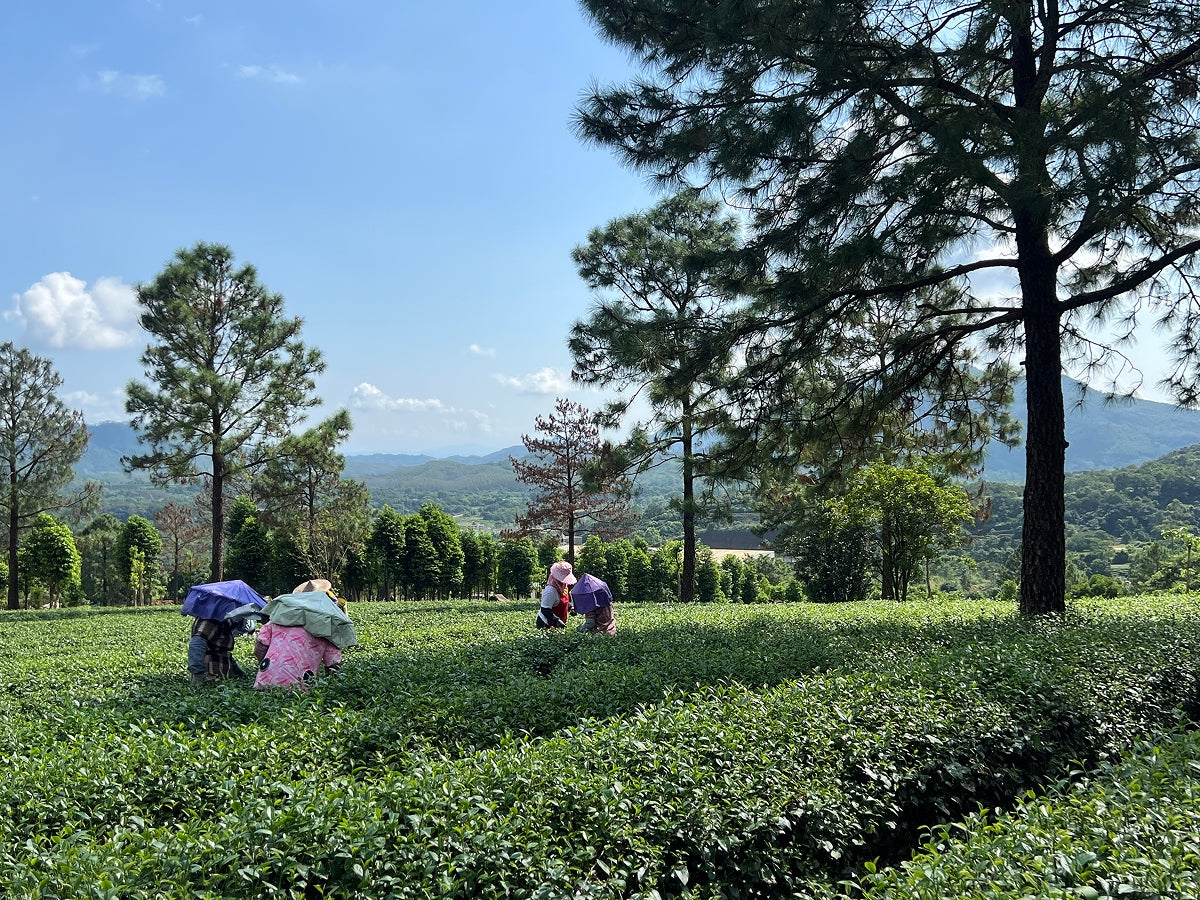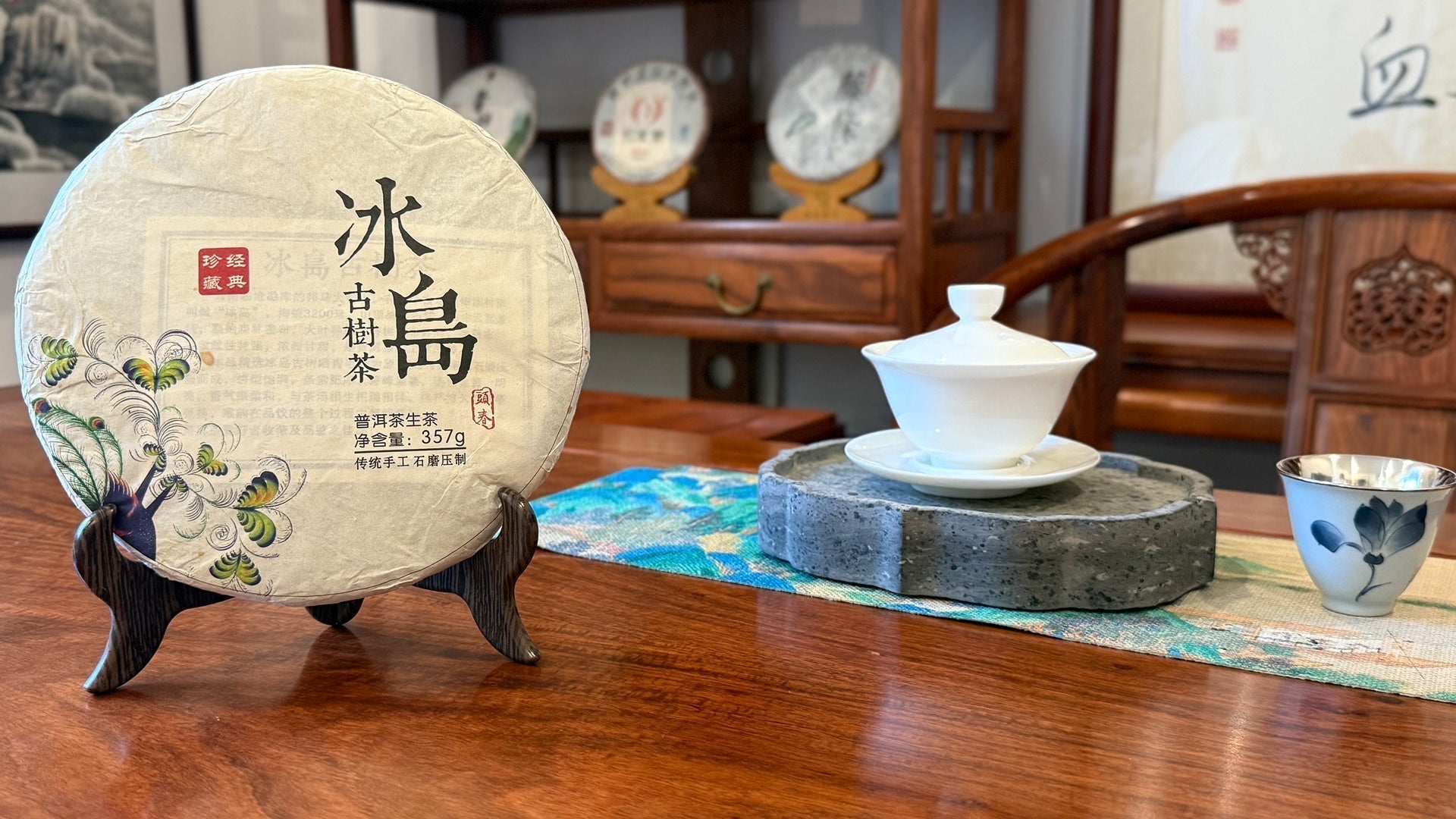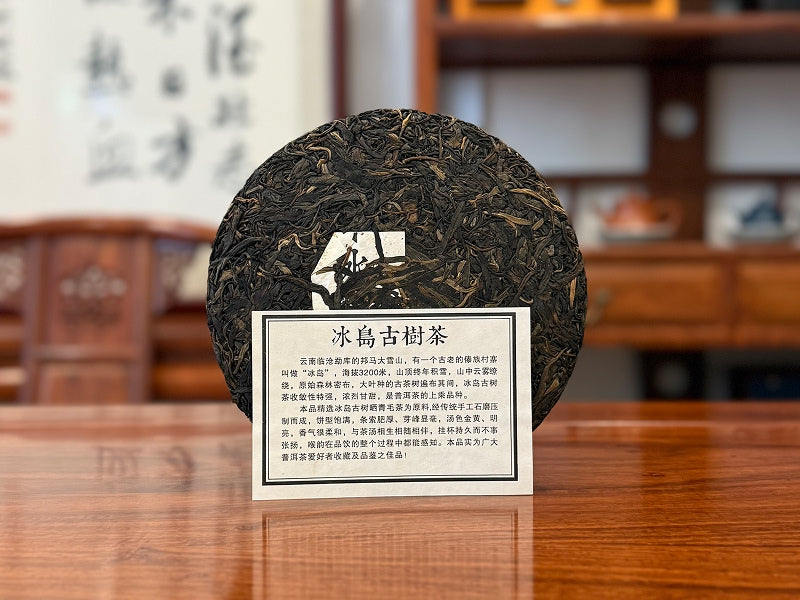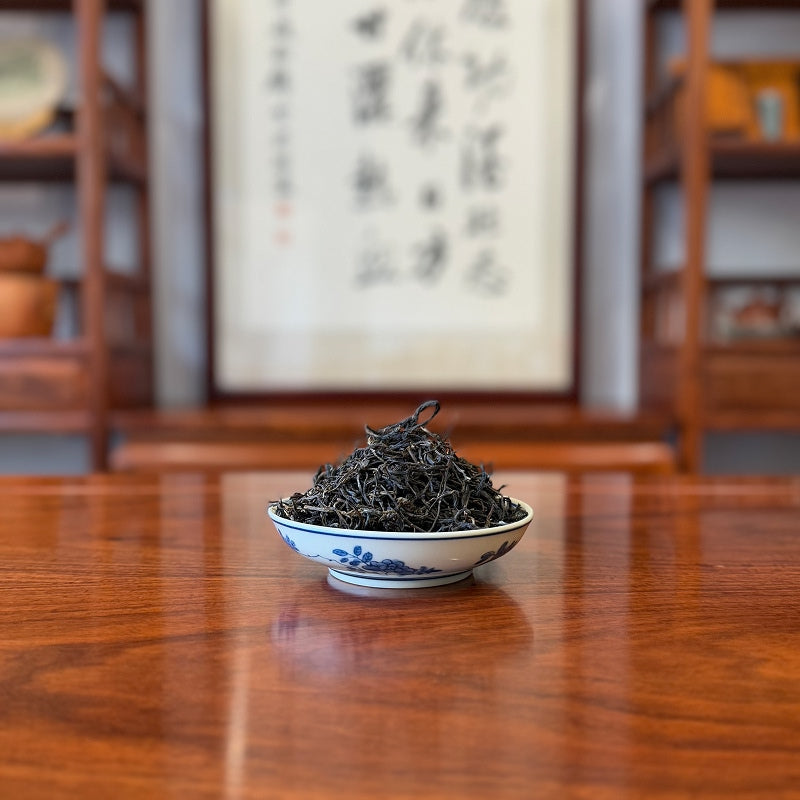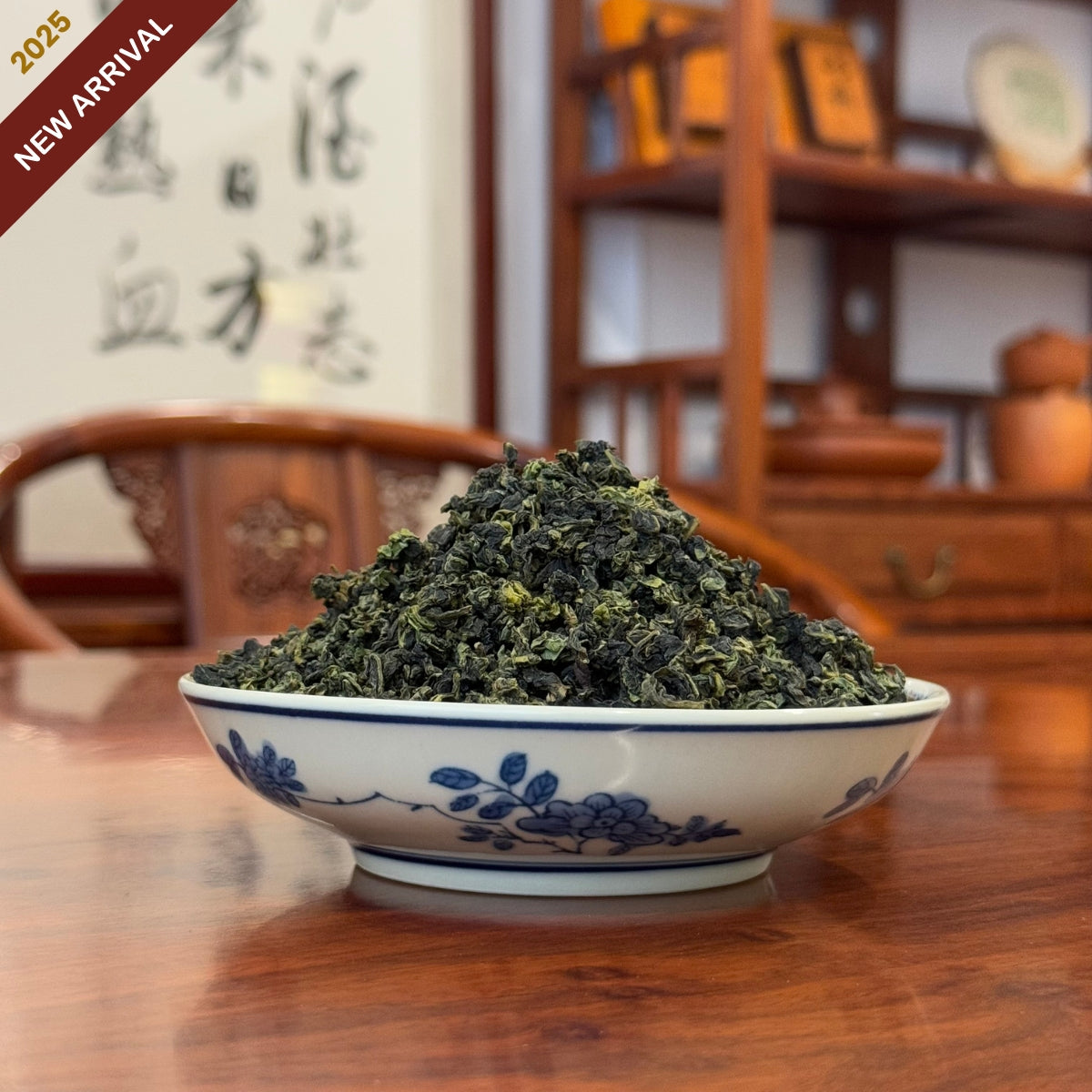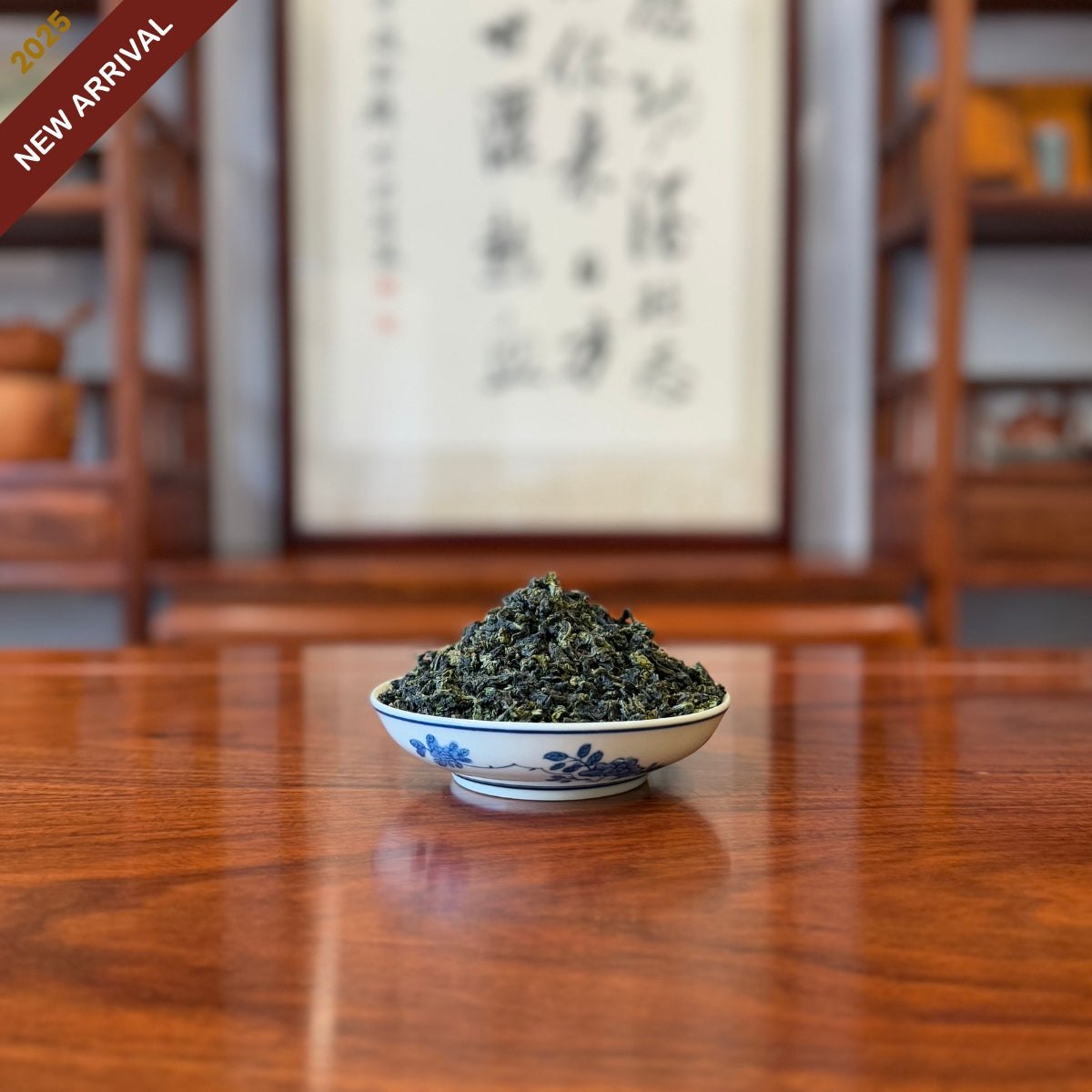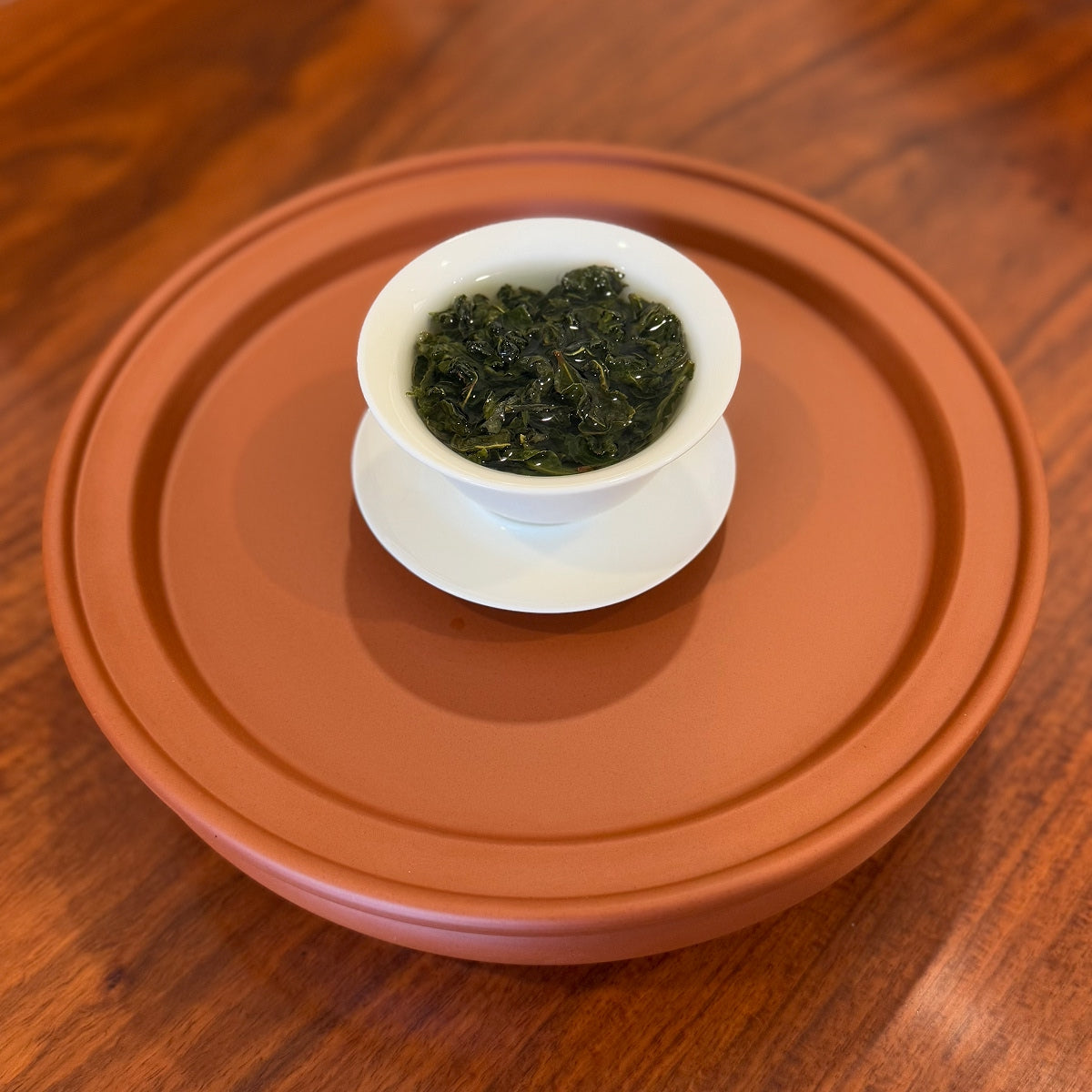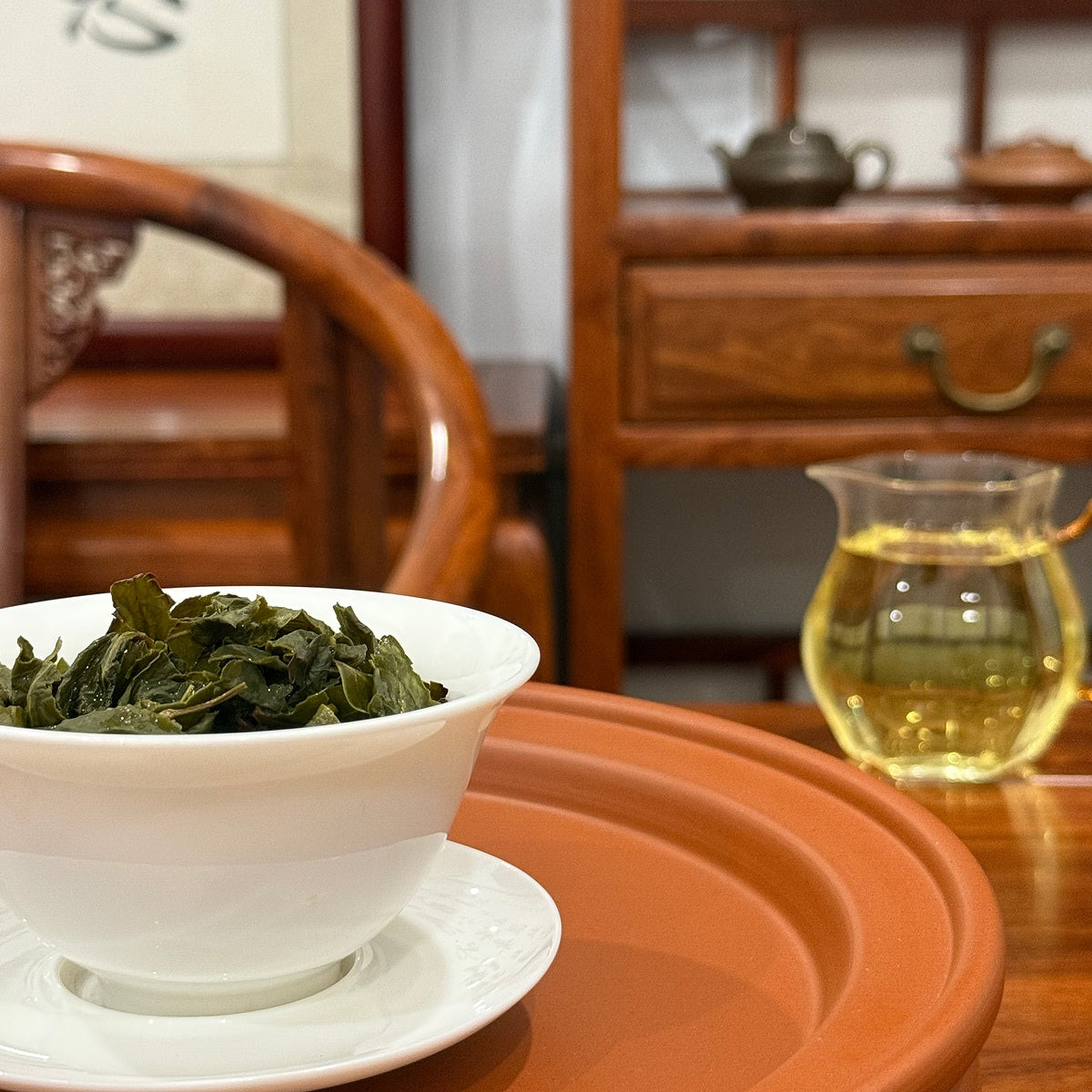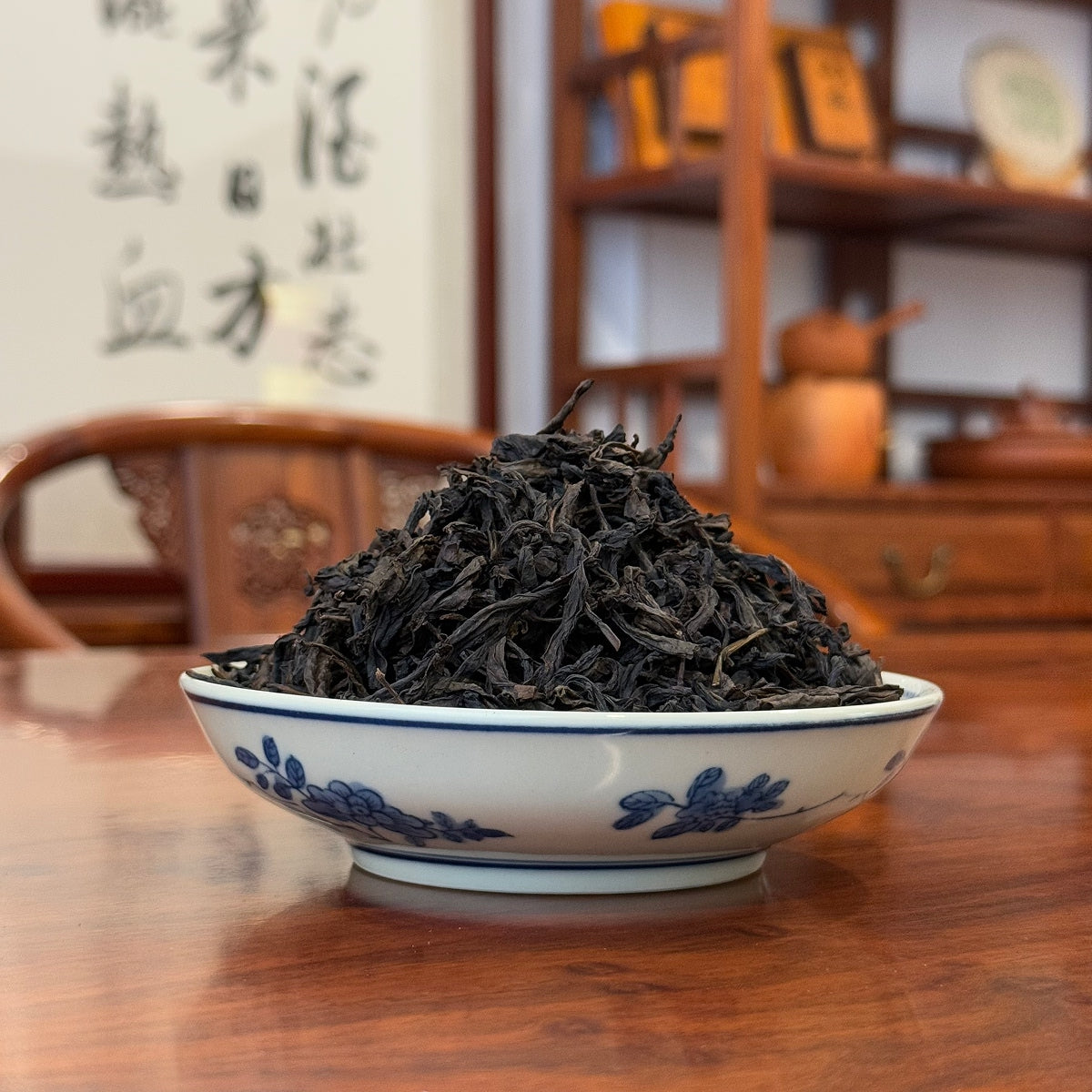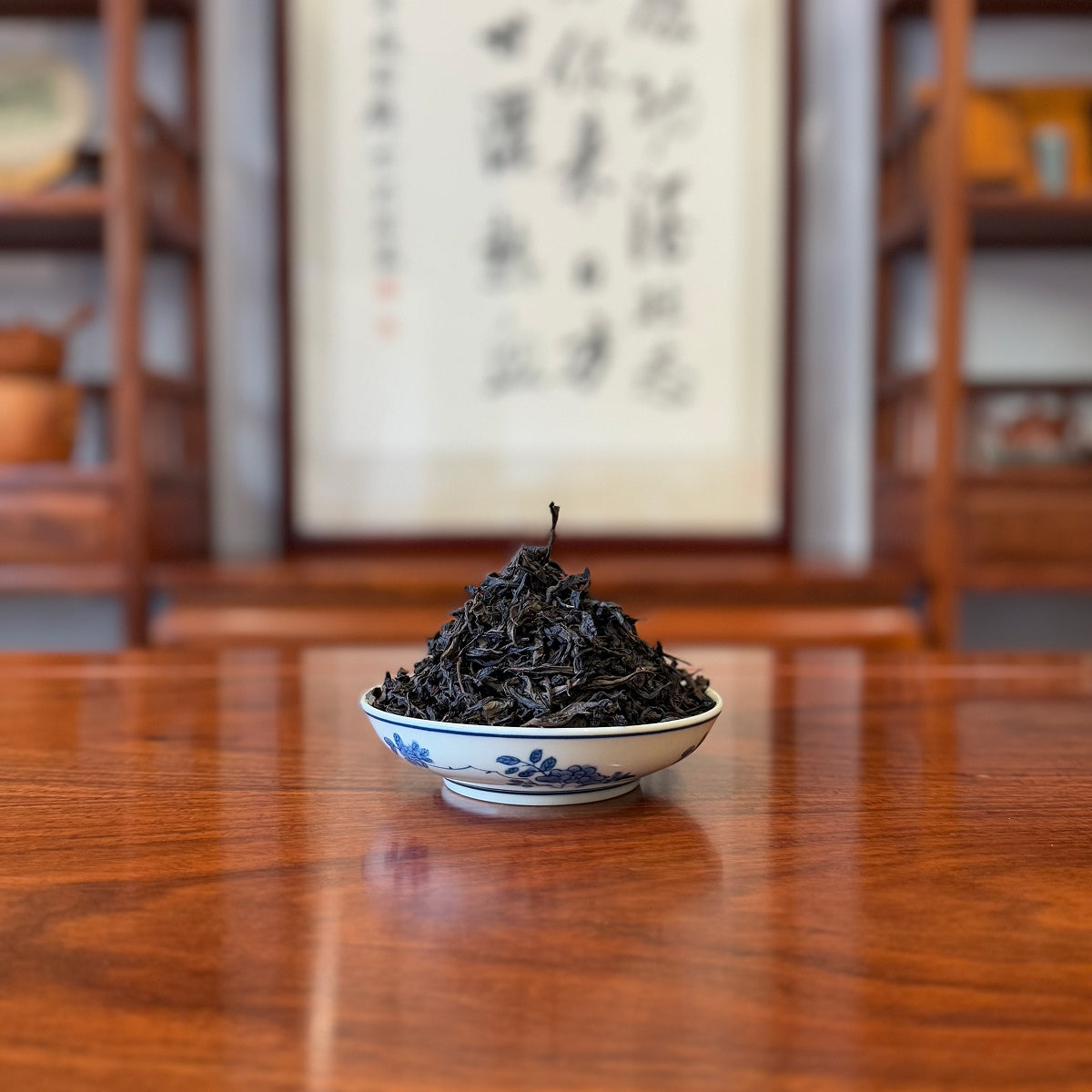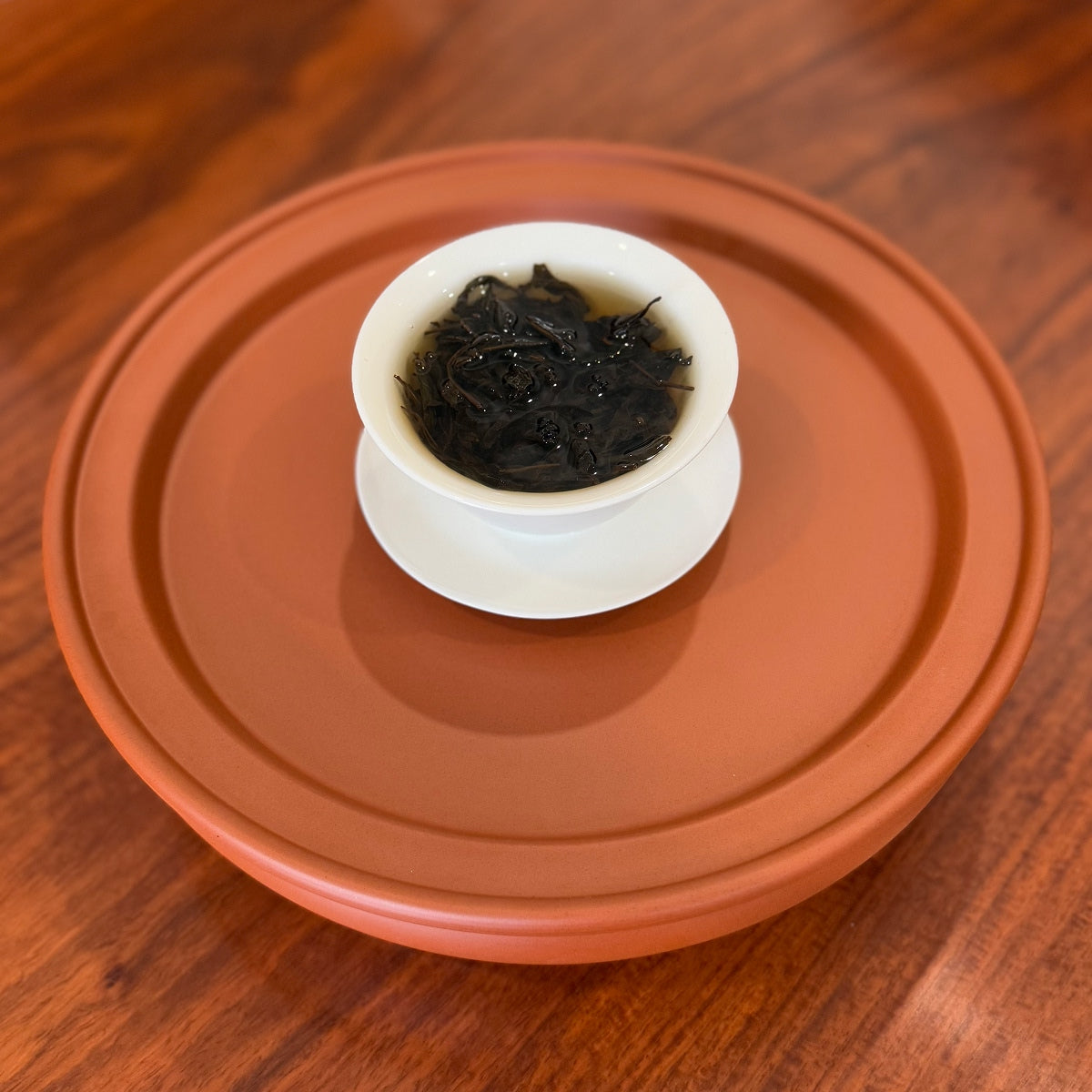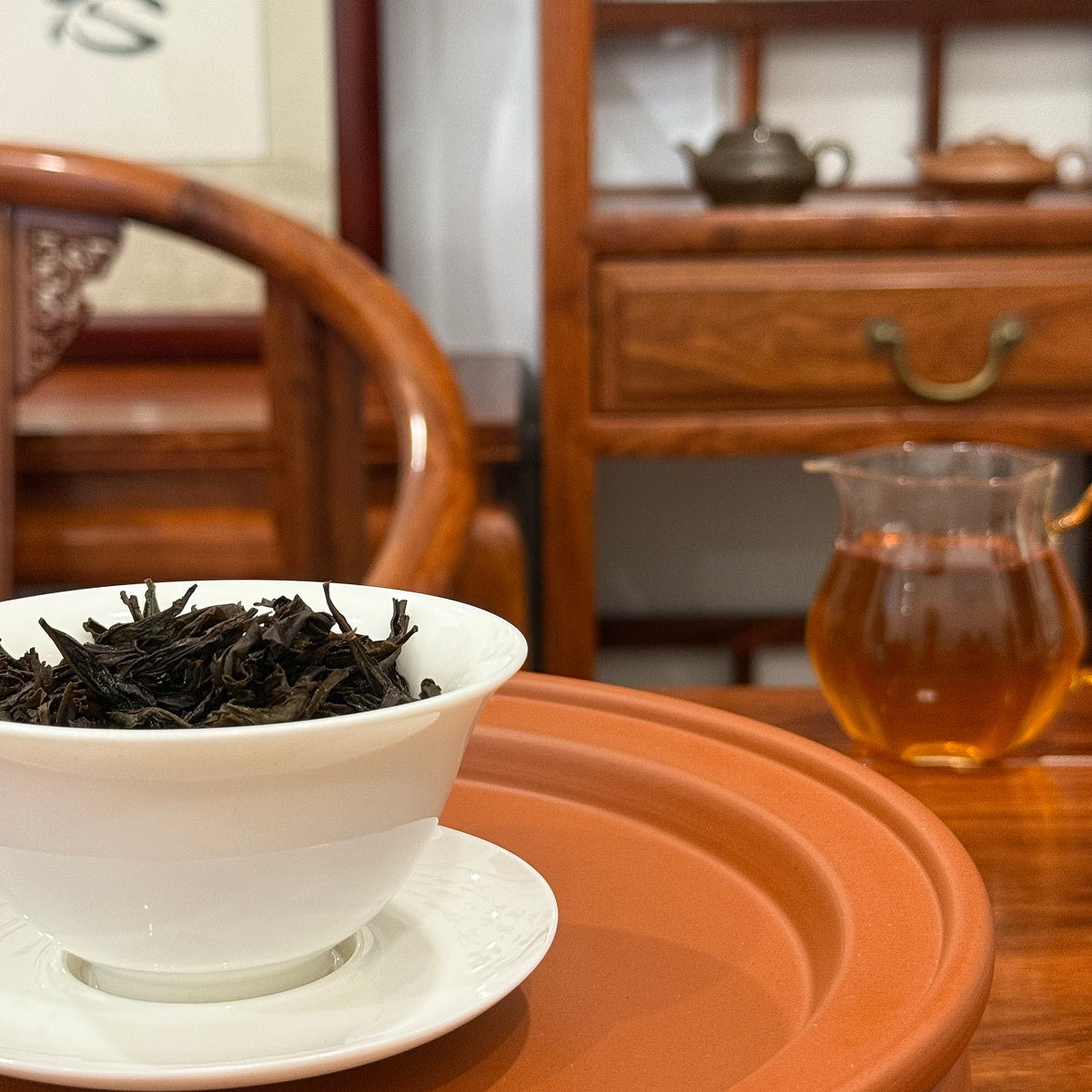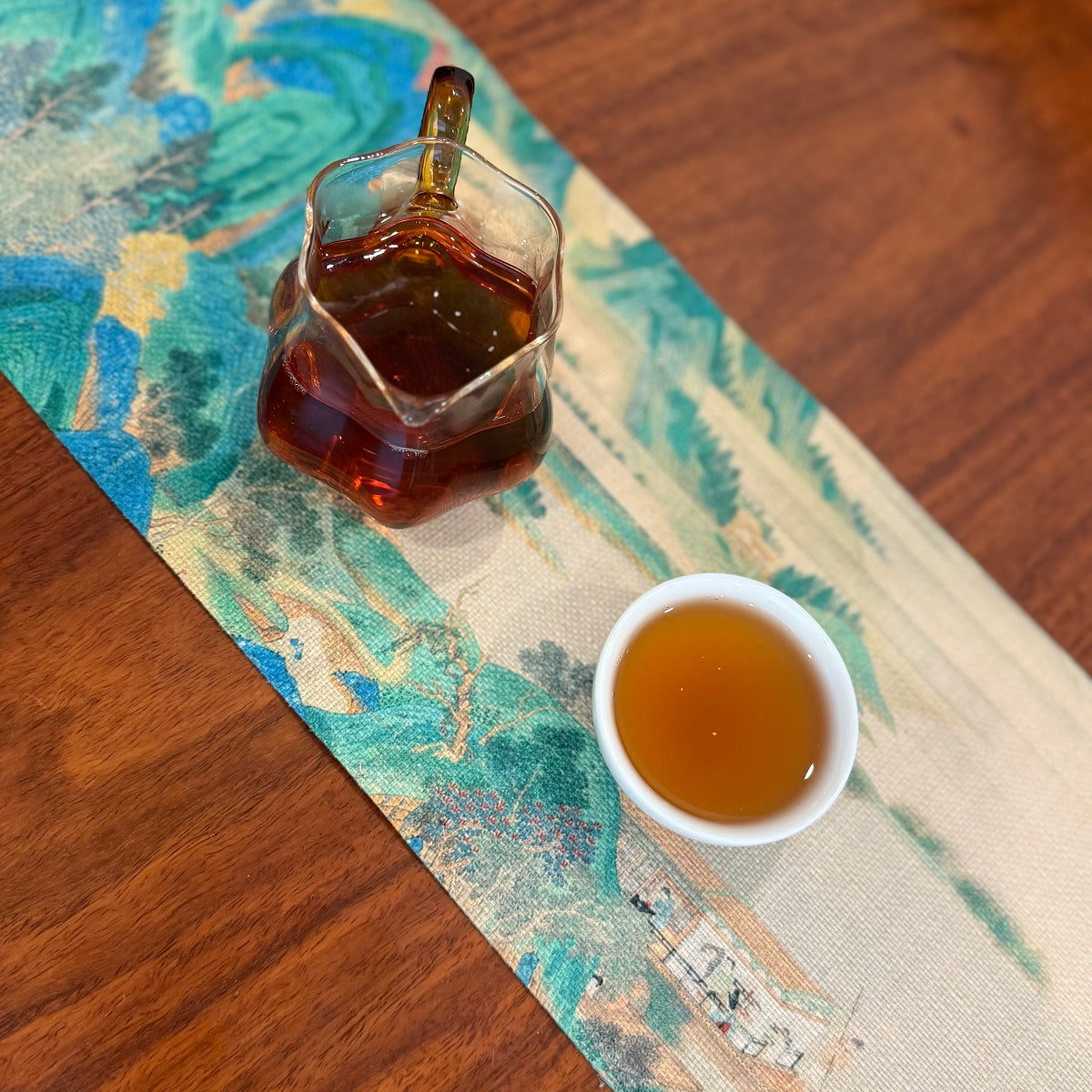La région du thé des rochers de Wuyi Mountain offre un paysage époustouflant, ponctué de formations rocheuses spectaculaires et d'une mer de nuages. Les théiers Rou Gui Oolong (thé Oolong à la cannelle), aux allures d'arbustes, prospèrent dans les plantations de thé à plus de 650 mètres d'altitude.

Pourquoi l'écosystème de Wuyi crée un thé de roche supérieur
Le sol fertile, formé de grès rouge érodé, allié aux vallées brumeuses et à un climat doux, fournit des nutriments abondants aux théiers Oolong de Rou Gui Wuyi Rock. Un épais brouillard réduit l'exposition directe au soleil, tandis qu'une abondante lumière diffuse permet aux feuilles de thé de pousser d'une tendreté exceptionnelle et d'une forte concentration en chlorophylle.
La chlorophylle, substance clé de la photosynthèse, absorbe principalement la lumière rouge et bleu-violet, ce qui favorise l'accumulation de composés internes riches, ce qui donne une saveur de thé plus complète et plus complexe.

Famille Lin : 20 ans de fabrication de thé sans engrais
Début avril dernier, notre artisan du thé s'est rendu au mont Wuyi pour apprendre la cueillette et la fabrication du thé auprès de Maître Lin Hanshen, expert en théologie du jardin familial Lin. La famille Lin possède ses propres terres et gère un petit atelier de thé artisanal, qui suit des pratiques traditionnelles depuis plus de vingt ans, sans utiliser d'engrais, en s'appuyant exclusivement sur une gestion écologique et sauvage.
Maître Lin insiste pour fabriquer le thé Oolong Wuyi Rock entièrement à la main, et parmi leurs thés, le thé Rou Gui est considéré comme l'un des meilleurs.

Récolte printanière : pourquoi un rendement moindre est synonyme d'un meilleur thé
La famille Lin ne récolte le thé qu'au printemps. Pour la fabrication artisanale du thé Oolong Rou Gui, les feuilles fraîches sont généralement cueillies en « un bourgeon à trois feuilles » ou « un bourgeon à quatre feuilles ». Ce jour-là, nous n'avons récolté que 16 kg de feuilles fraîches, qui, après transformation, n'ont donné que 1,8 kg de thé raffiné.
De retour à l'atelier, le frère aîné de Maître Lin soupira : la récolte de cette année était inférieure à la normale. Il se demandait pourquoi le rendement diminuait chaque année, malgré la bonne croissance des théiers. Serait-ce dû à l'absence d'engrais chimiques ? Un rendement plus faible entraînait des coûts de production plus élevés, rendant la pérennité de la production plus difficile.

Mais Maître Lin a répondu avec fermeté : créer un Rock Oolong digne d'être bu exige des années de pratique, jour après jour, année après année. Les théiers suivent le même principe : ils poussent en absorbant l'essence pure de la nature. Les préserver à l'état sauvage les rend plus résistants, et leurs nutriments proviennent entièrement de l'environnement naturel, et non d'engrais artificiels.
Bien que la fertilisation puisse augmenter le rendement, elle ne garantit ni la qualité du thé ni la protection des terres. Même si la récolte est plus modeste, des rendements plus faibles permettent de se concentrer davantage sur la production, garantissant ainsi une qualité de thé supérieure à celle des années précédentes.
Traitement manuel : un voyage de 36 heures pour capturer la saveur
De la cueillette au flétrissement, en passant par la cuisson à la poêle et la torréfaction, nous avons travaillé sans relâche jour et nuit, pour ne terminer qu'à midi le lendemain. C'est la saison la plus chargée, mais aussi la plus joyeuse, pour les cultivateurs de ce oolong parfumé à la cannelle.
Le Rou Gui n'est récolté qu'une fois par an, au printemps. En été, les feuilles poussent trop vite et développent une certaine amertume ; des récoltes en automne et en hiver sont possibles, mais peuvent compromettre la qualité du printemps suivant. Il est donc important de laisser les théiers se reposer pour garantir que la récolte de l'année suivante produise le meilleur thé.

Du traitement initial au thé raffiné, les feuilles subissent deux à trois torréfactions. Mi-juillet, le raffinement est terminé et le thé repose jusqu'en septembre pour permettre à son arôme de feu de s'adoucir avant sa commercialisation officielle.
Éco-philosophie : comment la croissance sauvage renforce les nutriments du thé
De la gestion écologique des plantations de thé aux traditions culturelles, en passant par le savoir-faire ancestral et la torréfaction répétée, chaque étape témoigne du dévouement des artisans du thé. Cet équilibre entre croissance naturelle et soin artisanal confère au thé Oolong Wuyi Rou Gui non seulement un goût exceptionnel, mais aussi des vertus santé uniques.
Bienfaits pour la santé et profil gustatif du thé Rou Gui Rock

L'arôme du thé Oolong Rou Gui Wuyi Rock est remarquablement unique. Il exhale le parfum chaleureux de l'écorce de cannelle, mêlé à des notes lactées et florales, créant un bouquet complexe et captivant. Riche en composés, sa liqueur est corsée et nuancée : fraîchement infusée, elle libère un délicat parfum de cannelle, à la fois doux et persistant. Cet arôme extraordinaire en fait un choix prisé des amateurs de thé.
Cette variété prisée apporte un soulagement surprenant et est considérée comme un « trésor de santé », presque comme un remède naturel. Elle rafraîchit l'esprit, stimule l'énergie, dissipe le froid, soutient l'énergie yang et favorise la chaleur.
La caféine contenue dans le thé stimule le système nerveux central, améliorant la vigilance et la réactivité, tandis que l'huile essentielle de cannelle facilite la digestion et améliore l'absorption des nutriments. Pour les personnes souffrant d'indigestion due à une mauvaise alimentation ou à un estomac fragile, une tasse de thé Oolong Rou Gui peut apporter un soulagement surprenant.
C'est précisément cette harmonie d'écologie naturelle et de dévouement artisanal qui donne à chaque feuille de Wuyi Rou Gui son arôme, son goût et sa valeur pour la santé - un véritable reflet de l'esprit du Wuyi Rock Tea.
Explorez la collection de thé Wuyi Rock du Chinese Tea Group pour découvrir d’autres thés exquis.
[Vidéo] Guide de brassage : Libérez l'arôme du Rou Gui
Pour explorer davantage l'art du brassage, nous vous invitons à regarder notre vidéo de brassage du thé Wuyi Rou Gui Rock Oolong , accompagnée d'instructions textuelles étape par étape et d'images détaillées pour vous guider tout au long du processus.
Articles connexes
- Da Hong Pao (Grande Robe Rouge) : Un représentant classique du thé Oolong Wuyi Rock
- Thé Shui Xian : le classique intemporel du Wuyi Rock Oolong

